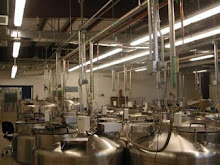Cryogenic storage is very helpful when storing biological materials. Because a cryogenic freezer can freeze things at -150 degrees Celsius (refrigerated storage is about 5 degrees Celsius and typical freezer storage is about -20 degrees Celsius), it can store many biological materials without letting them go bad.
Some of the biological materials that can be stored are:
- Blood
- Plasma
- Bone
- DNA
- RNA
- Explant device storage (hips, mesh, etc.)
- Tissues and cell lines
- Agro and plant samples
- Pathology and legal specimens
- Stem cells and cord blood
- Fluids and urine
- Clinical supplies
- Serum
- Slides
This is just some of the things that can be held in cryogenic storage. The control of the temperature of valuable biological materials is very important. From storing sperm samples, blood samples to even ways of storing food, cryogenic freezing is one of the best ways to ensure pristine preservation.
Labs that have cryogenic freezers are more likely to have more beneficial biological samples and have more accurate tests for blood, DNA or other animal tissues. Thanks to cryogenic storage, biological materials can be held for a long time and won't spoil or deteriorate. This is important in guaranteeing to those who need biological specimens preserved.
Wednesday, December 21, 2011
Tuesday, December 20, 2011
Handling Liquid Nitrogen and Liquid Nitrogen Equipment
Handling liquid nitrogen and liquid nitrogen equipment can be very dangerous, so there will be a need for extreme precaution for everyone who is involved. Liquid nitrogen is a dangerous material that can cause burns and loss of oxygen levels in the air. For example, if a 10 liter dewar is spilled in an unventilated 274 square foot room with an 8 foot ceiling, the oxygen levels would reduce to 19.5 percent. There would be a need for air respirators. Of course, this is a small room and most labs and classrooms are much larger and the oxygen levels should remain relatively high during a spill. However, when transporting the liquid nitrogen and liquid nitrogen equipment in a truck or van is a different story.
But suffocation isn't the main problem with liquid nitrogen and liquid nitrogen equipment. Freeze burns are a much more serious danger. This will cause the greatest concern when building an LN2 freezer.
These are the things that you should be worried when dealing with liquid nitrogen:
- Splatters, especially in eyes, while pouring
- Flying pieces of frozen objects
- Touching the nitrogen or other cold objects
So it's important to stress several precautions which include no touching and the use of goggles. Whenever pouring liquid nitrogen, it can splatter or spew out frozen pieces. It's also important to wear gloves and use tongs to handle any object that is being placed in or out of liquid nitrogen.
When handling liquid nitrogen and liquid nitrogen equipment, it's important to ensure safety to avoid any possible injuries.
But suffocation isn't the main problem with liquid nitrogen and liquid nitrogen equipment. Freeze burns are a much more serious danger. This will cause the greatest concern when building an LN2 freezer.
These are the things that you should be worried when dealing with liquid nitrogen:
- Splatters, especially in eyes, while pouring
- Flying pieces of frozen objects
- Touching the nitrogen or other cold objects
So it's important to stress several precautions which include no touching and the use of goggles. Whenever pouring liquid nitrogen, it can splatter or spew out frozen pieces. It's also important to wear gloves and use tongs to handle any object that is being placed in or out of liquid nitrogen.
When handling liquid nitrogen and liquid nitrogen equipment, it's important to ensure safety to avoid any possible injuries.
Subscribe to:
Comments (Atom)
